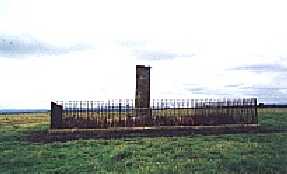BORDER PEOPLE
Edward I,
Hammer of the Scots
Scotland was blessed with a wise and respected king Alexander III and it was a severe blow when he was killed in an accident in 1286.
There was no immediate successor and the crown reverted to his granddaughter, the Maid of Norway who was only a child.
The stability which Scotland had enjoyed under Alexander no longer existed and with the active interference of Scotland, the country was torn to pieces.
This was an opportunity for Edward I to pursue his ambitions not to be
missed.
Edward I, having subdued the Welsh, turned his attention to Scotland
with the intention of extending his rule over that country. Had he
approached this task in a different way, unity with Scotland may have
come about three hundred years before it did.
Edward's attempt to install John Balliol as the Scottish king brought
turmoil through the Borders.
Scotland retaliated by making incursions into England but, being the
weaker country, suffered most.
Edward pursued a policy of fear and treachery. He attacked and captured the walled town of Berwick and in an unprecedented orgy killing, even for those times, s17000 people of Berwick died, men, women and children. The butchery lasted two days and, as would be expected, had a profound effect upon the Scots.
Reprisal led to counter reprisal and huge areas of southern Scotland were laid waste, including Edinburgh. The inhabitants adopted a scorched earth policy before the invading armies, destroying everything that might be of use to the enemy and taking to the refuge of wild terrains, emerging when the dangers were past and attempting to rebuild their lives until the next invasion. The people were subjected to this misery time and again, a people who, at best, found life difficult owing to the poor quality of the soil and an unkind climate.
Edward's forces were never able to consolidate theirs occupations. They
found little of use to them and were forced to return home for supplies.
The Scots had their successes too and huge areas of Northumberland were
ravished. Hexham and other Border towns were destroyed. Nevertheless,
the Scots were losing ground and were often overwhelmed by numbers and
superior forces and it was then that Scotland produced such leaders as
Wallace and Bruce. The Battle of Bannockburn was a severe blow to the
English.
In 1307, the Hammer of the Scots lay gravely ill at Lanercost. Making a last great effort he was taken to Brough-by-Sands where could see Scotland across the Solway Firth.
There he gave his son orders to take his body, as soon as he was dead and to boil it until all the flesh fell off the bones. Then the bones were to be carried by his son in all future battles until the Scots were subdued. All who supported Bruce were to be hanged, or dragged behind horse until they were dead and then disembowelled. Edward ordered that his heart be sent to the Holy Land in the care of 100 knights.
And so burning with hatred and despair he gazed over to the Scotland he could not conquer, and died.
|
|
|
|
Edward I used Lanercost Priory as a base for many of his incursions into
Scotland. Here he planned the subjugation of Scotland and the downfall
of Robert the Bruce.
